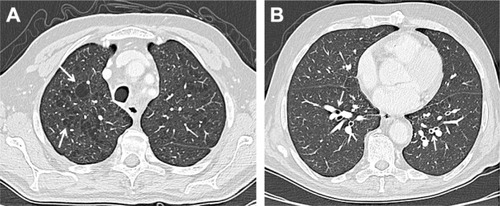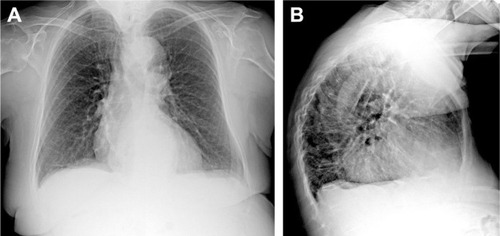Figures & data
Figure 1 Chest CT on axial planes. Chest CT usually shows emphysema which can be centrilobular, panlobular or paraseptal; the first one is the most common type of emphysema (A), usually related to smoking status and more marked in the upper lobes; the parenchymal destruction is centered around the terminal bronchiole, representing the center of the secondary pulmonary lobule. Other findings include bronchial wall thickening (B), air trapping and narrowing of the trachea in the coronal plane.

Figure 2 Chest X-ray in PA (A) and LL (B) projections. Chest X-ray has poor sensitivity to detect COPD; possible findings include prominence of the hilar vessels and decreased peripheral bronchovascular markings, flattened diaphragm due to hyperexpansion and hyperkyphosis and increased lung lucency (especially seen in the retrosternal region in LL projection) and bullae (round focal lucency over 1 cm).

